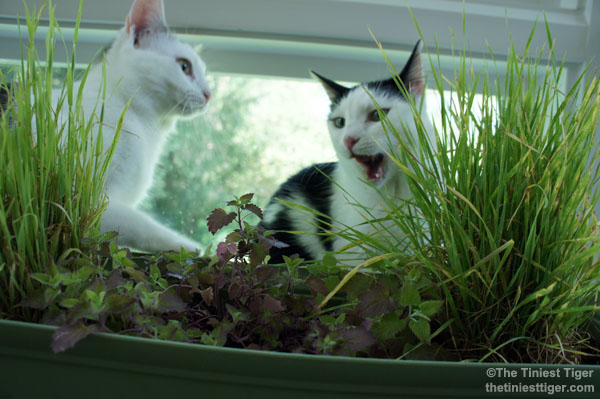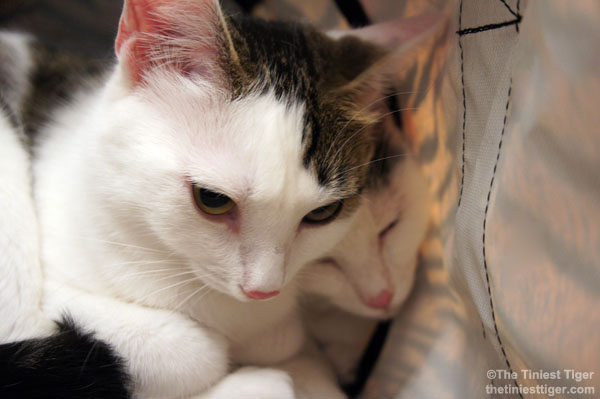Cat’s Don’t Show Pain As Other Species Do
Is my cat in pain? Cat parents worry if they will know if their kitty is suffering. Your cat is unique for many reasons, their distinct personality, their ability to make you laugh and their ability to comfort you when you are blue. Your cat seems to know when you aren’t feeling well and might even choose to curl up beside you helping nurse you back to good health. But what about when your cat isn’t feeling well? How will you know your cat is experiencing pain?
Cats do not show outward signs of illness or injury, often times until the condition has progressed to a more serious stage. Cats do not show pain as other species do. Even though your house cat lives indoors and might even be living a life of luxury, they are still essentially the same psychologically and physiologically as their wildcat ancestors. Living indoors has changed the cat very little from being a cat that thinks both as predator and prey. Your cat knows that showing signs of weakness could put their life in jeopardy. How, then will you be able to determine if your cat is suffering and needs help?
Be Familiar With Your Cat’s Healthy Behavior
The first step is to observe your cat to become familiar with their healthy behavior. If you are like me, you probably already spend quite a bit of time watching your cat as they interact with you around the house. But begin to be fully aware of your cat’s behavior. You might even write down and date a few notes in a small journal type notebook. Then, if you notice a change in your cat’s behavior, take your notebook with you to the veterinarians office to help the doctor understand what might be happening with your cat.
What To Observe in Your Cat’s Healthy Behaviors
- Food and Water- House cats typically eat small meals and drink water throughout the day. Try to notice how often and when your cat is eating and drinking.
- Litterbox – As a general rule, cats use the litterbox two to four times per day. Take notice of your cat’s litterbox routine.
- Sleep- Your cat might have a sleep rotation schedule. Observe where and when your cat likes to sleep. Does your cat sleep with you or alone?
- Activity- Does your cat jump, climb, like to perch in high places? Is your cat confidently moving through your home, tail up and curled on the end?
- Companionship- How often does your cat interact with you? Several times per day? Short frequent visits or longer sessions by your side?
- Grooming- Your cat will groom two-three times per day. A healthy cat typically stays clean and tidy.
- Vocalizing- Is your cat chatty or the shy quiet type? Big purrs or quiet gentle purring. Become familiar with your cats voice and what is normal for them.
- Weight- Weight loss or gain is an indicator of your cat’s health. Because your cat is a small animal, a ten percent change either way is significant. Get a weight on your cat. You can do this by first weighing yourself and then stepping back on the scale holding your cat. You can also look at a cat body conditioning chart to see if your cat is overweight, underweight or just right. Another idea is to take a photo of your cat, date it and place in your cat’s health journal. Then compare your cat to the photo to look for any changes.
Cat Behavior Changes Associated With Pain
When you have established your cat’s healthy behavior, any change to their behavior will be more obvious to your trained eye. When you notice any of these behavior changes take your cat to see their veterinarians right away.
- Food and Water- Any noticeable decrease or increase in food or water consumed.
- Litterbox- Any increase or decrease in volume of stool or urine and any sign that your cat is having difficulty getting in and out of the box. Any vocalization during elimination can be an indication of pain. Going outside the litterbox,
- Sleep- Is your cat restless? Sleeping less or seems unable to get comfortable?
- Activity- Is your cat reluctant to jump, climb or play? Or are they more active than usual?
- Companionship- Is your cat hiding or withdrawn or more clingy than usual? If you have a multiple cat home, is your cat showing aggression towards the other cat or you? Does your cat just seem in a bad mood?
- Grooming- Has your cat stopped grooming or started to over-groom in a certain area?
- Vocalizing- An increase in purring? Cats will purr in an attempt to comfort themselves. Purring is not always a sign that all is well with your kitty. Has your cat stopped asking for food or treats? Has your cat begun to cry out during the night or day?
- Weight- Weight loss or gain is an indication that something is happening with your cat’s health so any noticeable change will mean your cat needs a medical checkup.
Know Your Cat And Take Action
You know your cat best. Even if you just have a gut feeling something is not quite right take your cat to see their veterinarian. Towards the end of Gracey’s life, I noticed she was reluctant to sit down. She stood still, and then would sit down in what seemed like slow motion. She was still jumping up onto the sofa and bed but seemed uncomfortable sitting down. I knew this was not a good sign and we took her to see her doctors.
Eddie had issues with his teeth. Even though he was eating and drinking water, I sensed a sadness in his eyes. I knew something wasn’t quite right. He would play with Annie but he wouldn’t run with the same enthusiasm. After having his teeth pulled, he is much more playful and affectionate. Now Eddie can be heard racing all around the house, up and down the stairs during his midnight runs. And he has a sparkle in his eyes that makes us smile from ear to ear.




Having gone through the discovery of chronic ailments in each of my 2 kitties, purely through a ‘NQR’ (Not Quite Right) visit to the vet…I totally appreciate your discovery of both Gracie & Eddie’s issues.
It is heart-rending when you cannot help them fully recover and it makes your day when you can do something to make it better.
Eddie, Annie and Mercy are quite fortunate to have their family.
I’m so glad he’s feeling better <3